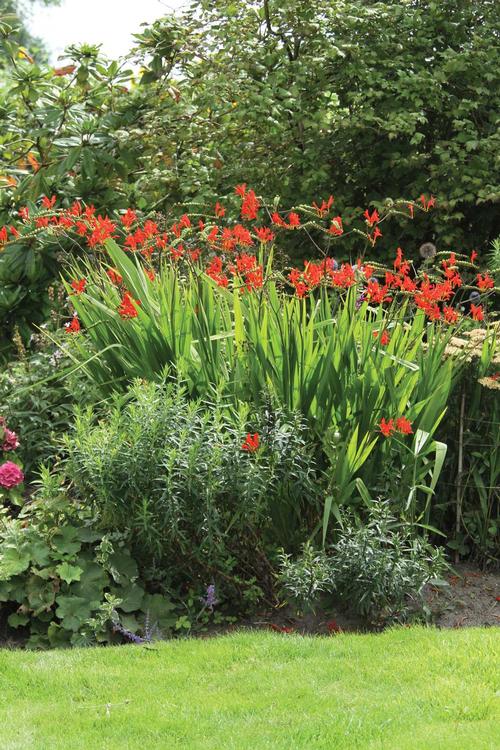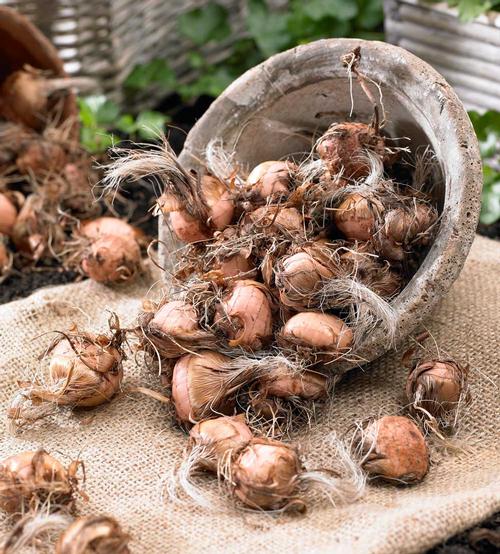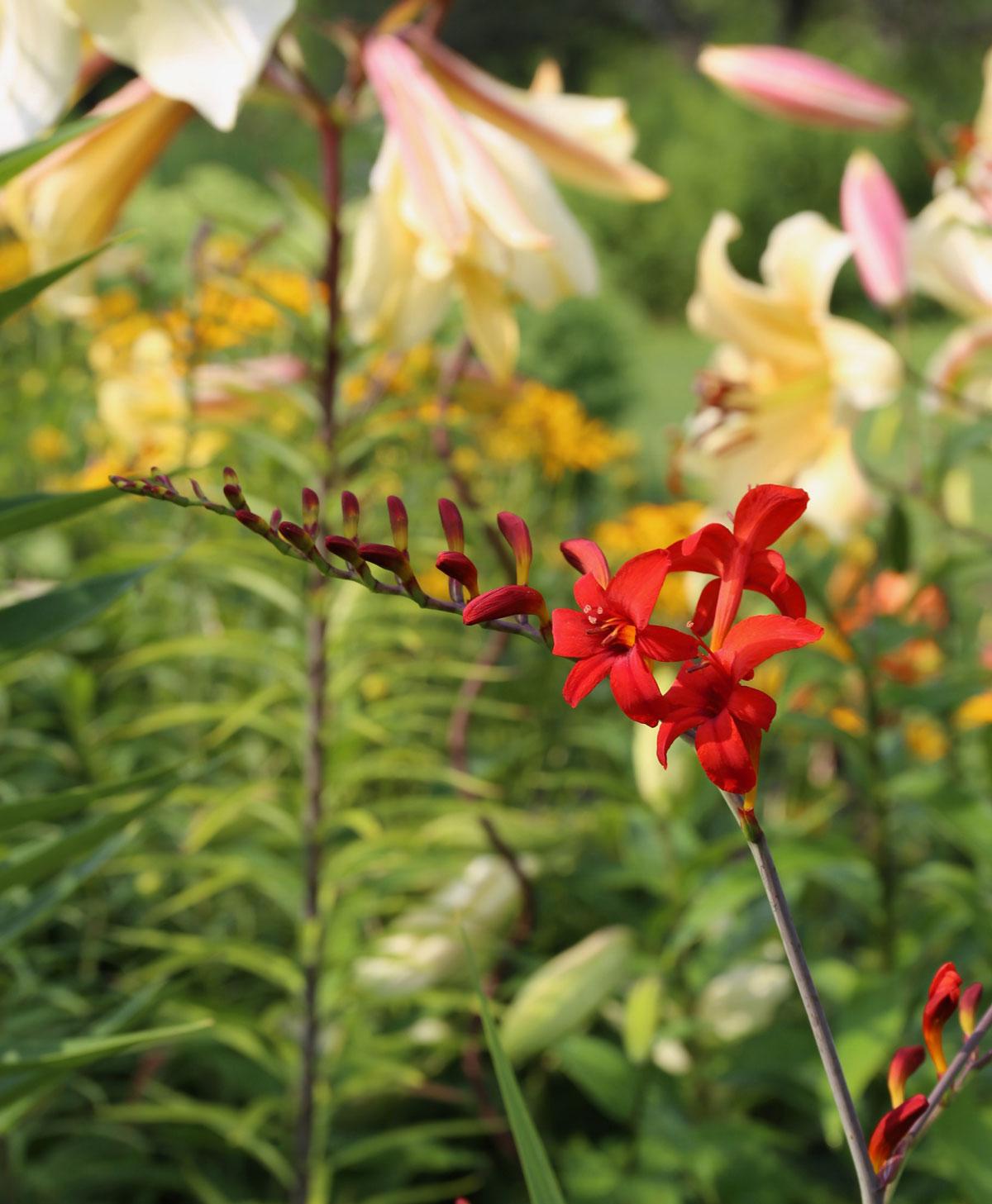ALL ABOUT CROCOSMIA
Crocosmia are summer blooming bulbs with exotic, brightly-colored flowers on wiry, arching stems. The buds open one-by-one from the bottom up and are magnets for hummingbirds. Crocosmia are native to eastern Africa. They are related to gladiolas and have similar sword-like foliage.
Plant crocosmia corms in spring for flowers in mid to late summer. In most climates, crocosmia is perennial and the plants will return to bloom again year after year.

START WITH A BETTER BULB
It’s easy to see the difference in quality when you compare two crocosmia plants side by side. After being harvested, crocosmia bulbs (corms) are graded by size. Large corms like ours on the left, grow into big plants that will give you a more beautiful display of foliage and flowers than smaller-sized bulbs (shown on the right).

PLAN FOR SUCCESS
SHADE AND SUN: Crocosmia will grow in partial shade, but the plants are stronger and produce more flowers when they are grown full sun.
ZONE: All crocosmias are winter hardy in zones 6-9. Some species, including Lucifer, are reliably hardy in zones 4 and 5. If you are concerned about hardiness, treat crocosmia as you would gladiolus. Dig the bulbs up after the first light frost and store them indoors for winter. Reference the USDA hardiness zone map HERE.
WHEN TO PLANT: Crocosmia bulbs should be planted outdoors in spring. They dislike cold soil and may not sprout until the soil is relatively warm.

HOW TO PLANT CROCOSMIA
Loosen the soil 6” deep and then dig an 8” diameter planting hole that is 3 to 4” deep.
Set several bulbs into the hole, placing them about 3” apart
Cover and water lightly
WHAT TO EXPECT
Crocosmia often takes a year or two to get established. Once it has settle in, it will become a robust plant that gets larger each year.
The foliage reaches its full height (3-4 feet) before the flower stalks appear. Flowers usually begin opening in midsummer and the show lasts for a month or more.

WHERE TO PLANT CROCOSMIA
FLOWERBEDS AND BORDERS: These brightly colored flowers add excitement to perennial gardens. Even when the plants are not in bloom, crocosmia's upright foliage adds an attractive vertical element.
CUTTING GARDENS: Crocosmia is an excellent cut flower. Their arching stems and long-lasting, brightly colored blossoms are popular with floral designers. To ensure you have plenty of stems for cutting, consider planting crocosmia bulbs in a cutting garden or even in a vegetable garden.
LANDSCAPING: Crocosmia look attractive growing in front of a wall or against a fence. They are good companions for ornamental grasses and can be planted among flowering shrubs.

CARING FOR CROCOSMIA AFTER THEY BLOOM
Once the flower clusters are completely spent, cut the stems back to where they meet the foliage and allow the leaves to continue growing.
Over time, crocosmia often form large clumps and the bulbs may become overcrowded. If this happens, flower production may decrease. To restore vigor, dig and divide the clumps in late summer or early fall.
Shop for HERE for Crocosmia Lucifer.


